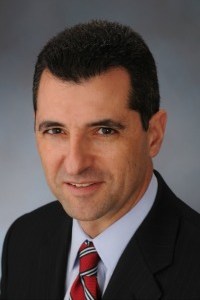A series of rule changes begun under former SEC Chairman Arthur Levitt are largely responsible for turning deep, centralized, and diverse pools of liquidity for trading stocks into our current fragmented market structure.
Today’s market now includes thirteen stock exchanges and dozens of dark pools. Dark pools are private trading venues that allow buyers and sellers to post orders that are hidden from the rest of the market. They are shallow and non-diverse in their participation, have non-uniform matching rules, and, in many cases, are extremely non-transparent.
The bigger problem, however, is that in times of market stress, the current market structure has an Achilles heel. This was exposed in the May 6th 2010 Flash Crash, countless mini-flash-crashes, botched IPOs, and algorithmic glitches.
The SEC has been well aware of these flaws. It recognized many of them in the actual Regulation NMS 2007 document, but chose to implement the rules without addressing them. In 2009, it proposed banning “flash-style” orders and regulating dark pools, but never followed through.
Since May 6th 2010, the SEC has proposed marginal patches for obvious market structure flaws, including the removal of stub quotes and the addition of single stock circuit breakers, which are soon to be replaced by a limit up/limit down safety mechanism.
These actions, however, amount to little more than Band-Aids on an infected wound. They do not address root plumbing issues and instabilities in our market structure. For instance, they did not prevent the Knight algorithmic disaster in August 2012, and they are not likely to prevent the next flash crash.
While our regulatory bodies are adept at “looking into” issues, they need to take action in order to command respect from the investing public. The proposed new SEC Chairwoman, Mary Jo White, has a great opportunity to take a comprehensive approach to market structure reform, by considering the following agenda as one piece of regulation:
1. Ban payment for order flow at all levels: Payment for order flow, such as the payments retail brokers receive from automated market makers, distorts the natural supply and demand of the market and hurts the price discovery process.
2. Eliminate the maker-taker exchange pricing model: Exchanges have used this model to reward their highest volume high frequency trading clients at the expense of all other client groups.
3. Mandate that exchanges route to each other when fragmented markets become “locked”: If an exchange receives an order that would receive a better price at another market center, that order should be mandated to route away. The current system enables exchanges to put their own economic interests ahead of the market.
4. Simplify/eliminate complex and unnecessary exchange order types: These orders give high frequency trading clients an advantage over other investors. This is unfair and discriminatory.
5. Regulate dark pools: More than one third of trades are now executed in dark pools. In 2009, the SEC proposed regulating them, but has not done anything yet.
6. Change the SRO rulemaking process to include input from investors, and not just traders: Exchanges and large brokers have traditionally dominated the market structure conversation. Institutional and retail investors need a larger voice in the rulemaking process.
In pursuing this agenda, we caution Ms. White to be wary of three special interest groups:
- Exchange executives. This group is likely to claim that technology has created a very cost effective and efficient market. They may say there is no need for reform and things are going smoothly despite some recent “glitches;” that all is needed is a kill switch here or there, and a lifting of a ban on locked and crossed markets. They may say it is a good thing for a buy order at 50 cents to exist alongside a sell order at the same price – and they not trade.
- High frequency trading firms. This group is likely to claim spreads have never been tighter and liquidity is abundant due to their activity. They may also say that the real problem is the financial media, and old school brokers, who are scaring investors about the dangers of high frequency trading unnecessarily. From their point of view, the problem is message management.
- Lobbyists. This group is likely to wave cherry-picked and sponsored academic studies that claim high frequency trading has lowered costs for all. Many of these studies, however, suffer serious conflicts of interest. Please see “High-Speed Traders Race to Fend Off Regulators,” by Jenny Strasburg and Scott Patterson of the Wall Street Journal. The December 27, 2012 article explains how high frequency trading firms “are fighting to fend off regulation…One of their primary tools has been research seeded by the industry itself.”
As an alternative, we recommend “The Trading Profits of High Frequency Traders” by Matthew Baron, Princeton University, Jonathan Brogaard, Foster School of Business, University of Washington, and Andrei Kirilenko, former Chief Economist of the Commodity Futures Trading Commission. This is the first paper using real trading data of E-mini S&P 500 futures contracts to document how high frequency trading is increasing costs for other investors. For further reading, we suggest R. T. Leuchtkafer’s December 2012 bibliography on most of the independent studies of high frequency trading.
We also recommend Ms. White read one or more of the growing list of books discussing issues related to high frequency trading, one of which is co-authored by us:
- Crapshoot Investing by Jim McTague
- Dark Pools by Scott Patterson
- The Problem of HFT by Haim Bodek
- The Payoff- Why Wall Street Always Wins by Jeff Connaughton
- Broken Markets by Sal Arnuk and Joe Saluzzi
While markets are near historic highs, there is a temptation to ignore problems as complex as market structure. However, we believe it is precisely at this point in time that Ms. White needs to fix the plumbing of our capital-raising system before disaster strikes – again.
 Sky Blog
Sky Blog

